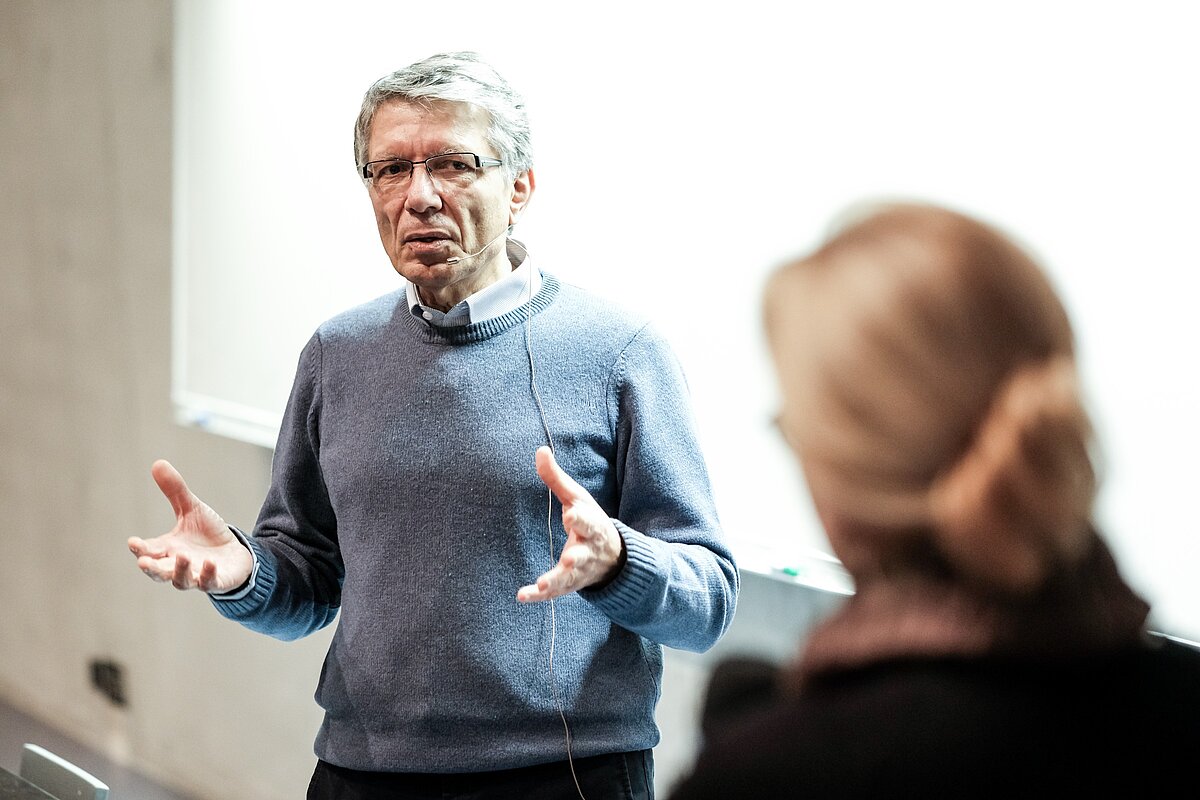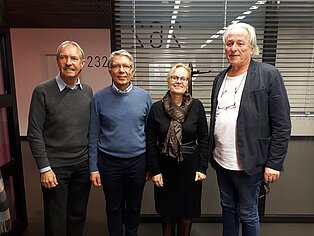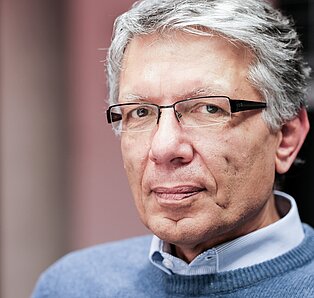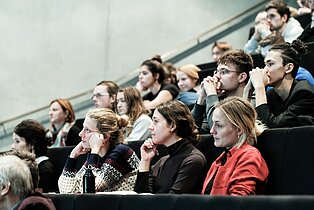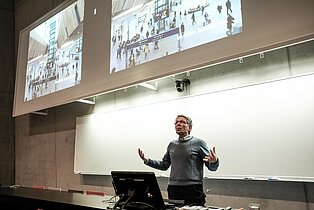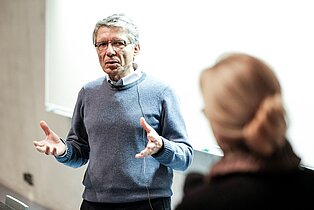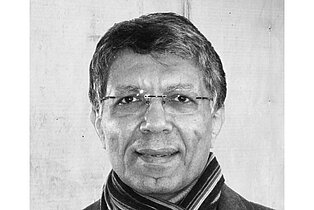Review | Ali Madanipour in Prague
Crossing the Boundaries: In-Between Spaces and Dialogic Practices
On Monday, 2 December 2019, Prague welcomed the theorist of urban design Ali Madanipour, who arrived to deliver the final lecture in this year’s series November Talks 2019 at the Faculty of Architecture of the Czech Technical University in Prague. Entitled “Crossing the Boundaries: In-between spaces and dialog practices”, his talk again was met with great public interest.
Originally from Iran, Ali Madanipour is the author of several dozen publications, which have been translated into many languages. He holds the position of professor of urban design at the School of Architecture, Planning & Landscape at Newcastle University in the United Kingdom and primarily addresses the sociological aspects related to physical environments of cities. One of his key themes is urban public space, and in fact the public space and its boundaries formed the theme of his Prague lecture.
The main boundary, for Ali Madanipour, lies between the public and private spheres, in which he also demonstrated how the interaction between differing groups of people can lead to innovation and creativity. In brief, the things that move us forward the most tend to emerge at the boundaries, at friction points, in interstitial spaces where it is possible to evade the boundaries and transgress or bridge them.
Madanipour divided his lecture into three sections: 1. The nature of boundaries and territories, 2. The view from either side and 3. Dialogic boundaries. In cities, he noted the presence of physical boundaries, technological boundaries, legal boundaries, symbolic boundaries, articulated and graded boundaries, porous boundaries, interactive boundaries, temporary and soft boundaries, or even invisible boundaries. He stressed that the city viewed from a distant or birds’ eye view (third person view) differs sharply from direct experience (first person view): the immediate experience of the city, of the public space. He also explained the “power of the boundary” and did not hesitate to conclude the first part of his lecture with the provocative question: “Who is drawing that line and on what basis?”
In the second part, the primary topic was the “view from the public space” and the question: “Who builds and runs cities?”
He continued with an explication of the location and the meaning of what he called “commercial boundaries”. The relationship between various boundaries and the urban character was illustrated through a photograph from Vienna, where immediately beside the cathedral there hung a two-storey-high billboard for Chanel. Seen from the reverse, in other words from the private sphere, he primarily demonstrated the materialisation of the fear of others within the space created by the walls around private houses. Nor did he neglect to mention that the idea of privacy in the digital age, as we conceive it sitting at home alone in front of our computers, is only illusory, and that at this moment we are being monitored and watched by far more people than we are in the real, physical public space of a city.
The third and final section of the lecture discussed “dialogic boundaries”: questions of economics, clustering and fragmentation and concluding with a question about the primacy of interaction:
“Is the private sphere the basic unit of the city, and the public space is only connecting these parts? Or is the public space the core of the city, and the private sphere is carved out of it?”
Boundaries are defining; they can set limits or open them up; they reflect power relations and the character of urban societies; and above all form a place for interaction, a space for the creation of new things. In a sense, boundaries as defined by Madanipour are not truly boundaries, but a kind of differentiation, an autonomy and an opportunity, a kind of dialogue in this interstice of space and time.
Very likely, the final lecture in this year’s November Talks 2019 posed more questions than provided answers – yet this fact only underscores its value and importance. In Madanipour’s own formulation, there is no dialogue that could ever create a stronger energy than the meeting of people in physical space and real time, face to face.
Veronika Kastlová
Interview-Video
Ali Madanipour talks about the importance of public places in cities.


